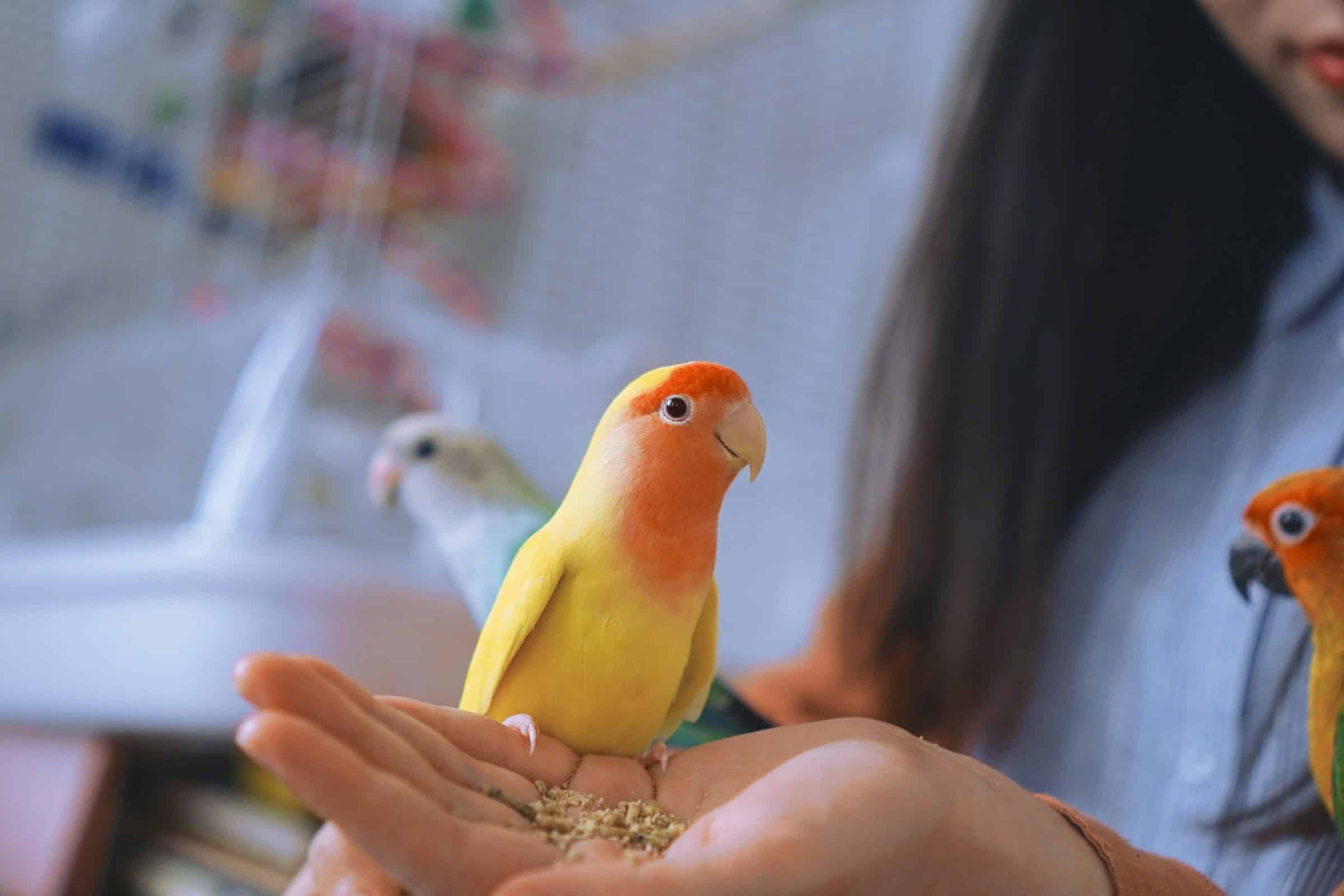How to Choose the Correct UV Lighting for a Parrot's Indoor Habitat?

Birds, especially parrots, require proper lighting to maintain their overall health and well-being. An important aspect of bird care involves providing them with a suitable light source that imitates their natural habitat. If you are keeping parrots indoors, the lighting of their cage is an aspect that deserves your careful consideration. Sunlight, which provides a full spectrum of light including UVA and UVB radiation, is crucial for parrots. However, when indoor living does not allow enough exposure to sunlight, artificial sources like UVB lamps become essential. In this article, we will guide you through the process of choosing the correct UV lighting, clarify the roles of different light spectrums, and discuss additional considerations in setting up your parrot's indoor habitat.
Understanding the Importance of UVB and UVA Lighting for Birds
Before delving into how to choose the ideal UV lamp for your parrot, it's crucial to understand why UV lighting is necessary. Birds, like parrots, have unique visual capabilities that allow them to see a wide spectrum of colors, including ultraviolet wavelengths. This capability aids in their food selection, mating rituals, and overall mood.
En parallèle : How autogenous vaccines meet the specific challenges of poultry farming?
UVB light plays an instrumental role in helping birds synthesize Vitamin D3, an essential nutrient for calcium absorption. In the wild, birds bask in the sunlight, naturally absorbing UVB rays. However, when kept indoors, their exposure to sunlight diminishes, leading to possible health issues like brittle bones and beak deformities. Providing a UVB lamp as part of their indoor habitat is a practical solution to this problem.
On the contrary, UVA light enhances a bird's environment perception and social interactions. Birds can see UVA light, which brightens their world and makes them more active. They use this light spectrum to recognize other birds, mates, and different types of food.
A lire également : How to Safely Increase the Exercise Regimen for a Dog Recovering from Heart Surgery?
Tips for Choosing the Correct UVB Lamp for Your Parrot
Choosing the right UVB lamp for your parrot can be a daunting task given the variety of bulbs available in the market. You'll want to pay attention to the output of the bulb, the distance at which it will be placed from your bird, and the size of the bird cage.
Firstly, ensure that the bulb has an output of 2.0 or 5.0. While a 2.0 bulb is suitable for birds in smaller cages, a 5.0 bulb will work best for larger cages. Bulbs labeled as ‘desert’ and ‘tropical’ may be used, with the former being suitable for birds that naturally inhabit desert regions and the latter for those from dense rainforest areas.
The distance of the bulb from the bird also matters. Ideally, the lamp should be placed 12 to 18 inches away from the bird but never closer than 6 inches.
The size of the cage is another factor to consider. A larger cage might require more than one lamp to ensure that the light is evenly dispersed.
Considering Full Spectrum Lighting
While UVB and UVA lighting are crucial, they do not cover the entire light spectrum. Hence, full spectrum bulbs are often recommended as they emit light resembling natural sunlight. Full spectrum lighting includes visual light, UVA, and UVB. It provides an environment that mirrors a parrot's natural habitat, promoting their well-being and encouraging natural behavior.
When purchasing a full spectrum bulb, it's essential to note that not all bulbs labeled as full spectrum actually emit UVA and UVB light. To ensure the bulb you select provides all necessary spectrums, look for labels that specify the inclusion of UVA and UVB.
Additional Considerations for Your Parrot's Indoor Habitat
While lighting is an important aspect of your parrot's habitat, there are additional factors to consider to create a healthy and comfortable environment for your bird. Temperature is a significant consideration: parrots, unlike reptiles or tortoises, don't require high-temperature basking spots. They are more comfortable in a room temperature range of 65 to 85 degrees Fahrenheit.
The size and type of cage also matter. Ensure that your bird's cage is large enough for them to move around comfortably. Additionally, it should be made of non-toxic materials and designed in a way that prevents injury.
Lastly, remember to provide your parrot with enough darkness for a good night’s sleep. Parrots need about 10-12 hours of darkness each day for rest. Therefore, it's important to turn off the UV lamps and any other light sources at night to mimic the natural day-night cycle.
In summary, parrots need both UVA and UVB light to thrive in an indoor habitat. Choose a UVB lamp based on your bird's species, the size of the cage, and the distance between your bird and the lamp. Consider a full spectrum lamp to provide your bird with light that closely resembles sunlight. And remember to respect the balance between light and darkness for your parrot's rest. With these considerations in mind, you can ensure your parrot's indoor habitat is as close to their natural environment as possible, promoting positive behavior, healthy growth, and overall well-being.
Evaluating Different Types of Full Spectrum Bird Lamps
When it comes to selecting a bird lamp for your parrot, it is important to be aware of the diverse types of lamps available in the market. These different types of lamps may look similar but they can have a significant impact on your parrot's health and well-being.
Full spectrum bird lamps are often recommended for pet birds, like parrots and African grey parrots, that are kept indoors for substantial periods. These lamps provide a broad range of light that closely mimics natural sunlight. This includes not just the visible light we see, but also the ultraviolet light that birds see, including both UVA and UVB light.
When buying a full spectrum bird lamp, you may come across terms like 'broad spectrum', 'daylight', and 'sunlight' lamps. However, don't be misled by these labels. Not all lamps labeled as full spectrum emit UVA and UVB light. Make sure to check the manufacturer's specifications or ask a professional to ensure that the lamp you select truly offers full spectrum lighting.
Another aspect to consider is energy efficiency. If you want to save money in the long run, choose a lamp with a higher energy efficiency rating. LED lamps, for example, might be more expensive initially, but they can save you money over time due to their lower energy consumption.
Lastly, consider the lamp's lifespan. High-quality bird lamps tend to have a longer lifespan, often up to several years. While they may cost more upfront, they could save you money in the long run, reducing the need for frequent replacements.
The Role of Natural Sunlight and UVB Light in the Well-being of Parrots
While artificial lighting like UVB lamps and full spectrum lighting plays a crucial role in the health and happiness of indoor parrots, there's no denying the benefits of natural sunlight. Natural sunlight not only provides the complete spectrum of light but also helps regulate the bird's internal clock, promoting healthy sleep patterns.
However, direct exposure to sunlight can be harmful as windows can filter out beneficial UVB light and intensify the heat, posing a risk to parrots. A safe way to give your parrot exposure to natural sunlight is by taking them outside in a secure bird cage, ensuring they have access to shade at all times.
Alternatively, placing your bird cage near a window that gets indirect sunlight can be beneficial. However, caution must be taken to ensure the cage is not in direct sunlight, which can lead to overheating. Another approach is to use a window that allows the transmission of UVB light.
Remember, even if your parrot gets some exposure to natural sunlight, a UVB lamp is still necessary for their indoor habitat. It ensures they receive adequate UVB light throughout the year, regardless of weather conditions or the changing seasons.
In conclusion, while setting up your parrot's indoor habitat, the choice of lighting is crucial. A combination of a UVB lamp and full spectrum lighting can simulate natural sunlight, providing your pet birds with the light necessary for their health and well-being. The size, type, and location of the bird cage, the cage's temperature, and the balance between light and darkness are all important considerations. By taking these factors into account, you can create an indoor habitat that closely mimics your parrot's natural environment, improving their quality of life. Also, remember that while artificial lighting is essential, nothing beats the benefits of safe, natural sunlight exposure.
